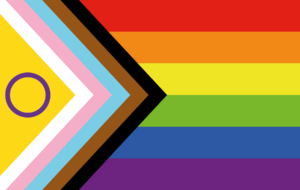Pride Flag
The rainbow flag or pride flag symbolizes LGBT pride and LGBT social movement. The colours reflect the diversity of the LGBT community and the spectrum of human sexuality and gender. Using a rainbow flag as a symbol of LGBT pride began in San Francisco, California, but eventually became common at LGBT rights events worldwide.
Initially devised by the artists Gilbert Baker, Lynn Segerblom, James McNamara, and other activists, the design underwent several revisions after its debut in 1978 and continues to inspire variations. Although Baker’s original rainbow flag had eight colours, from 1979 to the present day, the most common variant consists of six stripes: red, orange, yellow, green, blue, and violet. The flag is typically displayed horizontally, with the red stripe on top, as it would be in a natural rainbow. The popularity of the rainbow flag has influenced the creation and adoption of a wide variety of multi-color, multi-striped flags used to communicate specific identities within the LGBTQIA+ community.

-Wikipedia

-Wikipedia
Resources:
